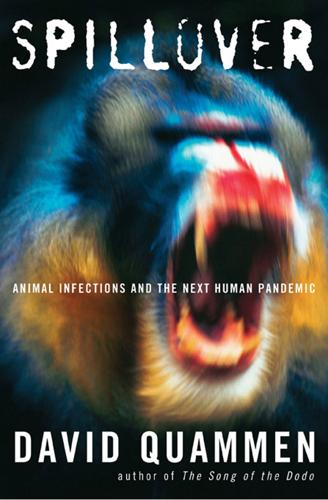
Spillover: Animal Infections and the Next Human Pandemic
by
David Quammen
Published 30 Sep 2012
A butterfly? A bat? To reside undetected within a reservoir host is probably easiest wherever biological diversity is high and the ecosystem is relatively undisturbed. The converse is also true: Ecological disturbance causes diseases to emerge. Shake a tree, and things fall out. Nearly all zoonotic diseases result from infection by one of six kinds of pathogen: viruses, bacteria, fungi, protists (a group of small, complex creatures such as amoebae, formerly but misleadingly known as protozoans), prions, and worms. Mad cow disease is caused by a prion, a weirdly folded protein molecule that triggers weird folding in other molecules, like Kurt Vonnegut’s infectious form of water, ice-nine, in his great early novel Cat’s Cradle.
…
Answer from the scientists: We don’t know but we’re working on it. 6 Hendra virus in 1994 was just one thump in a drumbeat of bad news. The drumbeat has been sounding ever more loudly, more insistently, more rapidly over the past fifty years. When and where did it start, this modern era of emerging zoonotic diseases? To choose one point is a little artificial, but a good candidate would be the emergence of Machupo virus among Bolivian villagers between 1959 and 1963. Machupo wasn’t called Machupo at the start, of course, nor even recognized as a virus. Machupo is the name of a small river draining the northeastern Bolivian lowlands.
…
For all his honors, for all his mathematical skills, for all his combative ambition and obsessive hard work, Ronald Ross couldn’t conquer malaria, nor even provide a strategy by which such an absolute victory would eventually be won. He may have understood why: because it’s such an intricate disease, deeply entangled with human social and economic considerations as well as ecological ones, and therefore a problem more complicated than even differential calculus can express. 25 When I first wrote about zoonotic diseases, for National Geographic in 2007, I was given to understand that malaria was not one. No, I was told, you’ll want to leave it off your list. Malaria is a vector-borne disease, yes, in that insects carry it from one host to another. But vectors are not hosts; they belong to a different ecological category from, say, reservoirs; and they experience the presence of the pathogen in a different way.

How to Survive a Pandemic
by
Michael Greger, M.D., FACLM
Entire ancient civilizations fell prey to diseases birthed in the barnyard.914 The second era came with the Industrial Revolution of the eighteenth and nineteenth centuries, resulting in an epidemic of the so-called diseases of civilization, including cancer, heart disease, stroke, and diabetes.915 Chronic diseases now account for seven out of ten deaths in the United States916 and the majority of deaths worldwide.917 Thankfully, these diseases are considered “largely preventable” through changes in diet and lifestyle.918 We have now entered into the third age of human disease, which started around forty years ago—the emergence (or re-emergence) of zoonotic diseases.919 Medical historians describe these last decades as the age of “the emerging plagues.”920 Never in medical history have so many new diseases appeared in so short a time, and the trend is continuing. We may soon be facing, according to the National Academy of Medicine, a “catastrophic storm of microbial threats.”921 We know that most of these new diseases are coming from animals, but animals were domesticated ten thousand years ago. Why now? What is responsible for this recent fury of new and re-emerging zoonotic disease? Starting in the last quarter of the twentieth century, medicine has been examining emerging disease within an increasingly ecological framework.
…
“And the hogs may not be the only ones to get sick.”1092 Even industry groups, like the American Association of Swine Veterinarians, have blamed “[e]merging livestock production systems, particularly where they involve increased intensification” as a main reason why zoonotic diseases are of increasing concern. These intensive systems, in addition to their high population density, “may also generate pathogen build-ups or impair the capacity of animals to withstand infectious agents.”1093 Increasing consumer demand for animal products worldwide over the past few decades has led to a global explosion in massive animal agriculture operations which have come to play a key role in the Third Age of emerging human disease.1094 LIVESTOCK REVOLUTION Breeding Grounds In response to the torrent of emerging and re-emerging zoonotic diseases jumping from animals to people, the world’s three leading authorities—the Food and Agriculture Organization of the United Nations, the World Health Organization, and the World Organization for Animal Health (OIE)—held a joint consultation in 2004 to determine the key underlying causes.
…
The Great Influenza: The Epic Story of the Deadliest Plague in History (New York, NY: Penguin Books). 366. Shortridge KF. 1999. Influenza—a continuing detective story. Lancet 354:siv29. 367. Davies P. 2000. The Devil’s Flu (New York, NY: Henry Holt and Company). 368. McNamara TS. 2002. Diagnosis and control of zoonotic infections: pathology and early recognition of zoonotic disease outbreaks. In: The Emergence of Zoonotic Diseases: Understanding the Impact on Animal and Human Health—Workshop Summary (Washington, DC: National Academies Press, pp. 64–78). 369. Leitner T (ed.). 2002. The Molecular Epidemiology of Human Viruses (Berlin, Germany: Springer Science and Business Media). 370. Laver WG, Bischofberger N, Webster RG. 2000.

Blockchain Chicken Farm: And Other Stories of Tech in China's Countryside
by
Xiaowei Wang
Published 12 Oct 2020
The appearance of new human diseases such as bird flu and other novel influenzas like COVID-19—zoonotic diseases that cross from animal to human—coincide with our modern era of optimizing life, of industrialized agriculture and subsequent habitat loss. The evolutionary biologist Rob Wallace has shown how this highly optimized, industrial farming of meat is leading to the unchecked creation of devastating new pathogens. For multinational agribusinesses and the governments that support them, “it pays to produce a pathogen that could kill a billion people.” A 2015 paper on zoonotic disease worriedly proclaims that 60 percent of all emerging diseases are now zoonotic, and 80 percent of new pathogens come from the top pork-producing countries—places like China.3 With meat consumption growing worldwide, we might just eat enough to also snuff ourselves out.
…
The city has become a world of strange contrasts, with riot police standing guard outside cosmetic stores as people buy mascara, and police violence against protesters in luxury shopping malls. Banks and stores associated with the Chinese government have been shuttered; storefronts protectively shrouded in plaster are covered in protest graffiti. Reports of a new zoonotic disease from mainland China causing flu-like symptoms in humans has added to the city’s unease, the memory of SARS still recent. The tropical air smells faintly sweet, laden with the figures of Hong Kong’s colonial past and the decline of empire. I try the exercise posted on the Facebook page. I close my eyes.
…
“Chinese Tech Companies Get into Farming,” The Economist, October 27, 2018, http://www.economist.com/business/2018/10/27/chinese-tech-companies-get-into-farming. 3. Dipendra Thapaliya, Blake M. Hanson, Ashley Kates, Cassandra A. Klostermann, Rajeshwari Nair, Shylo E. Wardyn, and Tara C. Smith, “Zoonotic Diseases of Swine: Food-Borne and Occupational Aspects of Infection,” in Zoonoses—Infections Affecting Humans and Animals, ed. Andreas Sing (Dordrecht, Netherlands: Springer, 2015), 23–68. 4. Henry A. Kissinger, Eric Schmidt, and Daniel Huttenlocher, “The Metamorphosis,” The Atlantic, August 2019, https://www.theatlantic.com/magazine/archive/2019/08/henry-kissinger-the-metamorphosis-ai/592771/. 5.

Age of the City: Why Our Future Will Be Won or Lost Together
by
Ian Goldin
and
Tom Lee-Devlin
Published 21 Jun 2023
The consumption of ‘bushmeat’ – animals such as apes, rats, bats and pangolins – is another factor in the growth of zoonotic diseases. While a small amount of bushmeat is eaten as a delicacy, most consumption occurs due to the absence of alternatives. HIV and Ebola are likely to have made their way to humans through this practice.36 It is estimated that as much as 5 million tonnes of wild animals are caught and eaten every year in the Congo basin alone.37 Most major new zoonotic diseases in living memory have emerged in the developing world, and are likely to continue doing so for the reasons mentioned above.
…
Such conditions facilitate the rapid transmission of infectious diseases among livestock, while the increased live transportation of animals over long distances makes outbreaks difficult to control.33 The disruption of wild habitats by the global population’s expanding physical footprint has also contributed to the rising number of zoonotic diseases being transmitted to humans. In 1998, the fatal Nipah virus first appeared in Malaysia. While the disease spread to humans through infected pigs, it originally passed to those pigs via fruit bats that had been displaced by deforestation.34 Such transmissions will continue to occur so long as we keep clearing 10 million hectares of forest around the world every year.35 Most of this occurs in developing countries, with countries like Indonesia, Brazil and Malaysia deriving a significant share of their national income from export crops like soya, coffee or palm oil.
…
Index abortion here abstract mathematics here Achaemenid Empire here Adani, Gautam here agglomeration effects here agriculture here, here, here, here, here, here, here, here, here and carbon emissions here and disease here, here productivity here, here vertical farming here Ahmedabad here air-conditioning here, here airports here, here, here, here Albuquerque here Alexandria here Allen, Paul here Allen, Thomas here Altrincham here Amazon here, here, here Amazon rainforest here Amsterdam here Anatolia here Anderson, Benedict here Anheuser-Busch here antibiotics here, here, here Antonine Plague here Anyang here apartment conversions here, here Apple here, here, here Aristotle here Arizona State University here Arlington here Assyrian merchants here Athens, Ancient here, here, here, here, here, here Atlanta here, here Austin here, here, here automation here, here, here, here, here, here, here, here axial precession here Baghdad, House of Wisdom here Baltimore here, here Bangalore here, here Bangkok here Bangladesh here, here, here, here Barlow, John Perry here Bauhaus here Beijing here, here Belmar redevelopment here Berkes, Enrico here Berlin here, here, here Berlin Wall, fall of here Bezos, Jeff here biological weapons here ‘biophilia’ here biospheres here bird flu here Birmingham here, here Black Death here, here, here Blake, William here Bloom, Nick here BMW here ‘bobo’ (bourgeois bohemian) here, here, here Boccaccio, Giovanni here Boeing here, here, here Bogota here Bologna here Bonfire of the Vanities here Borneo here Boston here, here, here Boston University here, here Brand, Stewart here Brazil here, here Brexit here, here, here Bristol here Britain broadcasting here deindustrialization here education here enclosure movement here foreign aid here high-speed rail here, here house prices here immigration here industrialization here, here infant mortality here ‘levelling up’ here life expectancy here mayoralties here per capita emissions here per capita incomes here remote working here social housing here Brixton riots here broadcasting here Bronze Age here, here, here, here bronze, and shift to iron here Brooks, David here Brynjolfsson, Eric here Burgess, Ernest here bushmeat here, here Byzantine Empire, fall of here Cairncross, Frances here Cairo here calendar, invention of here Cambridge, Massachusetts here Cambridge University here canals here, here, here ‘cancel culture’ here Cape Town here Catholic Church here C40 Cities partnership here Chadwick, Edwin here Chang’an (Xi’an) here, here, here, here Charles, Prince of Wales here charter cities here Chengdu here Chiba here Chicago here, here, here, here, here, here, here, here childbirth, average age at here childcare here, here, here, here, here China here ancient here, here, here, here call-centre workers here cereal production here civil strife here and Covid-19 pandemic here Cultural Revolution here definition of cities here economic liberalization here entry into WTO here Household Responsibility System here hukou system here One Child Policy here Open Coastal Cities here per capita emissions here rapid ageing here Special Economic Zones here technology here urbanization here China Towns here Chinese Communist Party here cholera here, here, here, here Chongqing here cities, definition of here Citigroup here city networks here civil wars here Cleveland here, here, here, here climate change here, here, here, here, here, here, here, here, here, here coastal cities here, here, here, here commuting here, here, here, here, here, here, here, here Concentric Zone Model here Confucius here conspiracy theories here Constantinople here, here containerization here, here Copenhagen here, here Corinth here Cornwall here corruption here Coventry here, here covid-19 see pandemics crime rates here ‘cyberbalkanization’ here cycling here, here, here, here Damascus here Dark Ages here, here data science here de Soto, Hernando here deforestation here, here, here, here Delhi here Dell here Delphic oracle here democracy here, here, here Democratic Republic of Congo here, here, here, here, here, here Deng Xiaoping here dengue fever here Denmark here, here Detroit here, here, here, here, here, here, here Dhaka here, here, here, here, here Dharavi here Diana, Princess of Wales here diasporas here, here Dickens, Charles here district heating systems here Dresden here drought here, here, here, here, here, here, here Drucker, Peter here dual-income households here, here Dubai here, here, here Dunbar, Kevin here Düsseldorf here East Antarctic ice sheet here East China Sea here, here Easterly, William here Eastern Mediterranean here, here, here Ebola here Edinburgh here education here, here, here, here, here, here, here, here, here, here, here, here, here, here higher education here, here, here, here; see also universities Japanese school system here Egypt here, here Ancient here, here, here, here Ehrenhalt, Alan here electric vehicles (EVs) here Engels, Friedrich here Enlightenment here Epic of Gilgamesh here Erfurt here Ethiopia here, here Euripides here European Enlightenment here exchange rates here Facebook here, here, here fake news here famine here, here fertility rates here, here, here ‘15-minute city’ principle here Fischer, Claude here Fleming, Alexander here flooding here, here, here, here, here, here, here Florida, Richard here, here food shortages here Ford, Henry here, here foreign aid here fossil fuels here, here France here, here, here, here, here, here, here, here, here, here, here Frankfurt here Franklin, Benjamin here Friedman, Thomas here, here Fryer, Roland here Fukuoka here, here Gaetani, Ruben here Galileo Galilei here Ganges River here Garden Cities here Garden of Eden here Gates, Bill here, here gay community here General Electric here General Motors here genetic engineering here gentrification here, here, here, here, here George, Andy here Germany here, here, here, here, here, here Gingrich, Newt here glaciers here Glasgow here Glass, Ruth here global financial crisis here, here, here global population, size of here globalization here, here, here, here, here, here, here, here, here, here Goldstein, Amy here Google here, here, here Goos, Maarten here Grant, Adam here Great Depression here, here Greece, Ancient here, here, here, here, here Griffith Observatory here Gropius, Walter here Gruen, Victor here Gulf Stream here Haiti here Hamburg here Hanseatic League here, here Harappa here, here Harry, Prince here Harvard University here hate speech here Haussmann, Baron here, here Hawaii here Hazlitt, William here healthcare here, here, here, here, here, here, here, here, here, here heatwaves here, here Hebei here Heckscher, Eli here Herodotus here Himalayas here Hippocrates here Hippodamus here Hittite Empire here HIV here, here Ho Chi Minh City here Holocene here, here, here homophily here Hong Kong here house prices here, here, here, here, here, here, here Houston here, here, here Howard, Ebenezer here Hudson River here Hugo, Victor here Hume, David here Hurricane Katrina here hybrid working, see remote and hybrid working ice melting here, here import substitution industrialization here InBev here India here, here, here, here, here, here, here, here, here fertility rates here Indonesia here, here Indus River here Indus Valley here, here, here inequality here, here, here, here, here, here, here, here, here, here, here infant and child mortality here, here, here, here influenza here, here, here ‘information cocoons’ here Instagram here internet here, here, here, here, here, here invention here, here, here, here, here, here, here, here, here, here irrigation here, here, here, here Italy here Jacobs, Jane here, here, here Jakarta here, here James, Sheila here Japan here, here, here, here, here, here, here, here, here post-war development here schooling system here Jenner, Edward here Jesus Christ here Jobs, Steve here jobs apprenticeships here ‘lousy’ and ‘lovely’ here tradeable and non-tradeable here Justinian Plague here Kashmir here Kenya here Kinshasa here, here Kish here knowledge workers here, here, here, here, here, here, here, here, here, here, here, here Koch, Robert here Kolkata here Korean War here Krugman, Paul here Kushim Tablet here Lagash here Lagos here, here, here, here, here, here, here Lahore here land titling programmes here Las Vegas here Latin language here Lee Kuan Yew here, here Leeds here, here Leicester here Leipzig here, here, here, here Letchworth here life expectancy here, here, here, here, here, here Liverpool here, here Ljubljana here London here, here, here, here, here, here, here bike lanes here Canary Wharf here, here Chelsea here, here, here China Town here cholera outbreaks here City of London here, here coffeehouses here and Covid-19 pandemic here financial services here gentrification here, here, here Great Stink here, here heatwaves here, here house prices here, here hybrid working here, here immigration here, here incomes here, here mayoralty here migration into inner London here population growth here, here, here poverty here, here public transport here, here, here slum housing here social housing here suburbanization here Los Angeles here, here, here, here Louisville here Luoyang here Luther, Martin here Luton Airport here Luxembourg here, here Lyon here McDonald’s here McDonnell Douglas here McLuhan, Marshall here Madagascar here malaria here, here, here, here Malaysia here Mali here malls, reinvention of here Manchester here, here, here, here, here, here, here Manila here Manning, Alan here Markle, Meghan here marriage here Marshall, Alfred here Marshall, Tim here Marx, Karl here Maya here, here measles here, here, here Meetup here mega regions here Mekong River here Memphis, Egypt here, here Mesoamerica here, here Mesopotamia here, here, here metallurgy here metaverse here methane here, here Mexico here Miami here, here, here microbiology here Microsoft here, here, here middle class, rise of here migration policy here millennial generation here Milwaukee here, here Minoan civilization here Mistry, Rohinton here MIT here MMR vaccine here ‘modernization’ theory here Mohenjo-Daro here, here Moretti, Enrico here, here mortality rates here, here, here, here, here, here, here, here, here, here, here, here motor car, invention of here Moynihan, Daniel here Mumbai here, here Mumford, Lewis here, here, here, here Munich here, here Mycenaean civilization here Nagoya here, here Nairobi here Nashville here National Landing, Arlington here Natural History Museum here natural resource exports here Nestlé here Netherlands here network effects here New Economics Foundation here New Orleans here, here New York here, here, here, here, here, here, here, here, here, here carbon emissions here and Covid-19 pandemic here gentrification here, here housing here, here, here incomes here, here Manhattan here, here, here, here, here population growth here, here and rising sea levels here slum housing here suburbanization here, here subway here waste and recycling here New York Central Railroad here New York World Fair here Newcastle here Nextdoor here Niger here Nigeria here, here, here, here Nilles, Jack here, here Nipah virus here Norway here, here Nottingham here Novgorod here ocean and air circulation here office rental and sales prices here Ohlin, Bertil here Oldenburg, Ray here online deliveries here OpenTable here Osaka here, here Oslo here Ottoman Empire here Oxford, population of here Oxford University here Pacific Belt Zone here Padua here Pakistan here, here, here pandemics here, here, here, here, here, here, here, here, here, here, here, here, here, here and zoonotic diseases here paramyxovirus here Paris here, here, here, here, here, here, here, here, here, here, here, here, here, here, here, here Paris Conference (2015) here Park Chung-hee, General here parks here Pasteur, Louis here Pearl River Delta here, here Peñalosa, Enrique here per capita income here Philadelphia here Philippines here, here Phoenix here, here Pixar here plague here, here, here, here Plato here plough, invention of here pollution here, here, here, here air pollution here, here, here, here population growth here, here, here, here, here, here, here, here PORTL here potter’s wheel, invention of here printing press here, here productivity here, here, here, here, here agricultural here, here Protestantism, rise of here public transport here, here, here, here, here, here, here, here, here, here, here, here, here, here Putnam, Robert here, here quarantine here railways here, here, here, here, here high-speed rail here, here, here Ralston Purina here Reagan, Ronald here recycling here, here religion here remote and hybrid working here, here, here, here Renaissance Florence here, here, here renewable energy here, here Republic of Letters here République des Hyper Voisins here ‘resource curse’ here Rheingold, Howard here Ricardo, David here Rio de Janeiro here Riverside, San Francisco here robotics here Rockefeller, John D. here Roman Empire here, here, here Rome, Ancient here, here, here, here, here, here Romer, Paul here Rotterdam here Rousseau, Jean-Jacques here, here Sahel here, here sailboat, invention of here St Augustine here St Louis here, here, here Salesforce here San Diego here San Francisco here, here, here, here, here, here, here, here, here, here, here gentrification here, here hybrid working here, here San Francisco Bay Area here, here, here Santa Fe here São Paulo here Savonarola, Girolamo here Scientific American here Scott, Emmett J. here sea levels, rising here, here, here Seattle here, here, here, here, here, here Second Opium War here Seneca here Seoul here Shanghai here, here, here, here, here Shantou here Sheffield here, here, here Shen Nung here Shenzhen here, here Siemens here Silk Roads here, here Sinclair, Upton here Singapore here, here, here, here Slater, Samuel here smallpox here, here Smith, Adam here, here Snow, John here social capital here social housing here, here social media here, here, here, here, here Socrates here solar panels here South Africa here South Korea here, here, here, here, here, here Southdale Center here specialization here, here, here, here, here, here Spengler, Oswald here Starbucks here Stephenson, Neal here Stewart, General William here Stuttgart here Sub-Saharan Africa here subsidiarity principle here suburbanization here, here, here, here, here, here, here, here, here Sunstein, Cass here Sweden here, here Sydney here, here, here, here, here, here Syrian refugees here, here Taiwan here Tanzania here telegraph here Tempest, Kae here Thailand here Thames River here, here Thatcher, Margaret here, here, here ‘third places’ here Tianjin here Tocqueville, Alexis de here Toffler, Alvin here Tokyo here, here, here, here trade liberalization here trade routes here Trump, Donald here, here tuberculosis here, here, here Twain, Mark here Twitter here, here typhoid here, here typhus here, here Uber here Uganda here Ukraine here, here Umayyad Caliphate here unemployment here, here United Nations here, here United States anti-global populism here anti-trust regulation and industrial consolidation here anxiety and depression here broadcasting here car registrations here cost of education here decline in trust here deindustrialization here Gilded Age here Great Migration here house prices here, here immigration here industrialization here inequality here labour mobility here ‘magnet schools’ here parking spaces here patent filings here per capita emissions here, here per capita incomes here remote working here, here, here return on equity here Rust Belt here schools funding here slavery here socioeconomic mobility here suburbanization here tax revenues here US Federal Housing Authority here US General Social Survey here US Trade Adjustment Assistance Program here universities here, here, here University College London here University of Texas here university-educated professionals here Ur here urban heat island effect here urbanism, subcultural theory of here Uruk here, here, here, here, here vaccines here, here Van Alstyne, Marshall here Vancouver here Venice here, here Vienna here, here Vietnam here voluntary associations here, here Wakefield, Andrew here walking here, here, here Wall Street here Warwick University here Washington University here WELL, The here Welwyn Garden City here wheel, invention of here wildfires here, here William the Conqueror here Wilson, Edward Osborne here, here Wilson, William here World Bank here, here World Health organization here World Trade Organization here World Wide Web here writing, invention of here Wuhan here, here Xiamen here Yangtze River here, here Yangtze River Delta here yellow fever here Yellow River here, here Yersinia pestis here Yokohama here YouTube here, here Yu the Great here Zhuhai here Zoom here Zoroastrianism here BLOOMSBURY CONTINUUM Bloomsbury Publishing Plc 50 Bedford Square, London, WC1B 3DP, UK 29 Earlsfort Terrace, Dublin 2, Ireland BLOOMSBURY, BLOOMSBURY CONTINUUM and the Diana logo are trademarks of Bloomsbury Publishing Plc This electronic edition first published in Great Britain 2023 Copyright © Ian Goldin and Tom Lee-Devlin 2023 Ian Goldin and Tom Lee-Devlin have asserted their right under the Copyright, Designs and Patents Act, 1988, to be identified as Authors of this work All rights reserved.

Practical Doomsday: A User's Guide to the End of the World
by
Michal Zalewski
Published 11 Jan 2022
Exercise The Importance of the Long Haul Chapter 12: Building a Community Chapter 13: Hatching a Plan Jotting Down Scenarios of Concern Modeling Sequences of Events Defining Basic Strategies Identifying Indicators and Decision Points Planning to Fail Facing the Final Contingency From Plans to Supplies Part III: The Essentials Chapter 14: The Discreet Charm of the Bulletproof Vest Chapter 15: Water Estimating Water Needs Household Storage Options Hydration on the Road Long-Term Storage Tips Chapter 16: Nourishment Estimating Bulk Calorie Needs Nutrition in the Long Haul Picking a Storage Strategy Keeping Stockpiled Foods Fresh Stocking the Doomsday Pantry Specialty Survival Foods Backyard Gardens as a Source of Food Chapter 17: Sanitation, Hygiene, and Health Waste Disposal Containment of Flooding and Leaks Dishwashing, Laundry, and Other Chores Personal Hygiene Medication and Medical Supplies Medical Skills Chapter 18: Fuel and Electricity Keeping the Lights On Powering Small Electronics Staying Warm Staying Cool Cooking Getting Around Looking Beyond Short-Term Outages Chapter 19: Household and Vehicle Tools Storm Cleanup Equipment Dealing with Car Malfunctions Other Household Gear Chapter 20: Evacuation Gear General Preparations Setting Up a Camp Bad Weather Preps Food and Water in the Wild Knives and Other Camping Tools Wildlife Management and Physical Security Chapter 21: Protection Against Pollutants and Disease Human-to-Human Transmission of Diseases Zoonotic Disease Vector Control Smoke and Industrial Accidents Nuclear Disaster Preps Chapter 22: Emergency Communications The Lost Art of Pen and Paper Satellite Communications Two-Way Radios Understanding the Range of Handhelds Radio Bands and Types of Service Digital Radios and Data Transmission Licensing Requirements Looking Beyond Handhelds Chapter 23: Entertainment and More Part IV: Active Self-Defense Chapter 24: The Politics of Putting Up a Fight Chapter 25: Standing Up for Your Belongings What You Aren’t Allowed to Do Buying Some Peace of Mind Buying Time Chapter 26: Fighting for Your Life The Legalities of Self-Defense The Right to Arm Yourself The Merits of Unarmed Combat Less-Lethal Defense Tools Weapons That Kill Chapter 27: Understanding Firearms Handguns Semiautomatic Pistols Revolvers Other Concealable Firearms Deciding on Handgun Caliber and Size Long Guns Rifles Shotguns Ammunition Firearm Safety Rules Firearm Storage Getting Good Epilogue Endnotes Index Practical Doomsday A User’s Guide to the End of the World by Michal Zalewski PRACTICAL DOOMSDAY.
…
If you choose this option, having a way to spray the suit with diluted plastic-safe disinfectant upon exiting any high-risk area would be a good plan to avoid cross-contamination. Although it’s difficult to make blanket statements, Diversey Oxivir Five 16, Expose, and Virex II 256 are three commercial sanitization products with very different chemistries—peroxide, quaternary ammonium salt, and phenolic—that would probably do the trick. Zoonotic Disease Vector Control Respiratory ailments have gotten the lion’s share of public attention in the last 20 years, but illnesses transmitted by animals have a remarkably grim track record too: even if we forget the Black Death, malaria still kills around 2.5 million people a year. Malaria may seem like a distant problem confined to the developing world, but it was common in the United States until the early 1950s, when the government undertook a large-scale eradication campaign and sprayed more than 5 million homes with dichlorodiphenyltrichloroethane (also known as DDT).7 I find it conceivable that a new zoonotic disease could make inroads in wealthy nations, or that one of the old hits could make a comeback—especially if economic trouble or political unrest mounts down the line.
…
Malaria may seem like a distant problem confined to the developing world, but it was common in the United States until the early 1950s, when the government undertook a large-scale eradication campaign and sprayed more than 5 million homes with dichlorodiphenyltrichloroethane (also known as DDT).7 I find it conceivable that a new zoonotic disease could make inroads in wealthy nations, or that one of the old hits could make a comeback—especially if economic trouble or political unrest mounts down the line. For the control of disease-carrying flying insects, malaria provides a solid playbook. Some of the simplest control techniques include window screens, bed nets, head nets, and the removal of breeding grounds such as stagnant water around the home.

MegaThreats: Ten Dangerous Trends That Imperil Our Future, and How to Survive Them
by
Nouriel Roubini
Published 17 Oct 2022
No one can predict what exactly will trigger the next shock even if the bear market in many equity markets in the first half of 2022 signaled that the latest asset bubble was nearing an end. There are plenty of candidates: a massive market bubble bursting as in 1929; a surge in inflation forcing central banks to tighten monetary policy in a draconian way, leading to an unsustainable rise in interest rates; pandemics worse than COVID-19 as zoonotic diseases transmitted from animals to humans become more frequent and virulent; a corporate debt crisis stemming from a credit crunch as interest rates rise; a new housing bubble and then bust clobbering homeowners and lenders; a geopolitical shock like the war between Russia and Ukraine in 2022 escalating and becoming more severe, leading to further spikes in commodity prices and inflation; other geopolitical risks; and the rising risk of another global recession triggered by the confluence of the above risks.
…
Since 1980, by contrast, we have been hit by HIV, SARS, MERS, bird flu, swine flu, Ebola, Zika, and now COVID-19 and its multiple variants. Why? One hypothesis blames the destruction of animal ecosystems on climate change. Thus, bats, pangolins, and other animals carrying dangerous pathogens live in closer proximity with livestock and humans, making transmission of zoonotic diseases nearly inevitable. An investigation by Harvard University’s Center for Climate, Health and the Global Environment has focused on this linkage. “With fewer places to live and fewer food sources to feed on, animals find food and shelter where people are, and that can lead to disease spread,” says Dr.
…
Geopolitical discord impedes united action against the world’s most sweeping peril: global climate change, which threatens life on earth for billions of people in regions too hot or too flooded to inhabit. Earth’s rising temperature will unleash storms and heat waves more frequent and more severe than humans can endure. These conditions will precipitate biological catastrophe. When ecosystems deteriorate, living spaces press animals and humans closer together. Zoonotic diseases will spawn pandemics and tax health care networks more than ever. As skies warm, melting permafrost will release even more pathogens frozen for millennia. When COVID-19 is in the rearview mirror, it won’t mean the end of severe global pandemics. It’s just a question of when the next virulent one will strike, and how fast we can respond—if we can respond.
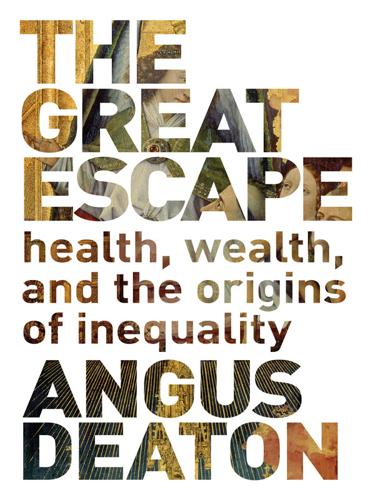
The Great Escape: Health, Wealth, and the Origins of Inequality
by
Angus Deaton
Published 15 Mar 2013
The epidemic itself is another reminder that escapes can be temporary, and that great epidemics of infectious disease—HIV/AIDS now, cholera in the nineteenth century, and the Black Death in medieval times—are not safely confined to the past. Much attention, in both the scientific and the popular press, has been paid to current threats from “emerging” infectious diseases, particularly those, like HIV/AIDS, that crossed from animal reservoirs to humans. There are many such “zoonotic” diseases, some spectacularly and quickly lethal. Yet this is a lethality that makes it almost impossible for them to turn into large-scale epidemics; killing victims is good for neither the victims nor the bugs. HIV/AIDS, which is not easily transmitted and which kills very slowly, poses a much greater danger, and the pandemic that it caused should discourage us from believing that such diseases can be safely ignored in the future.
…
Hunter-gatherers were exempt from some infectious diseases, though others, like malaria, have likely been present throughout human history. Small groups cannot maintain infectious diseases, such as smallpox, tuberculosis, or measles, that confer (sometimes limited) immunity upon recovery, but they are subject to zoonotic diseases whose normal hosts are wild animals or the soil, as well as to a range of parasites such as worms. Life expectancy at birth among hunter-gatherers, around 20–30 years depending on local conditions, was short by today’s standards, although not by historical standards in the West, nor within living memory in countries that remain poor today.
…
See also gender differences World Bank: child mortality rate estimates of, 102; development projects of, 289–91, 300, 321–22; foreign aid of, 276–77, 280; health aid of, 104–5, 307; health care absenteeism surveys of, 123; health care spending estimates of, 120–21; income categories of, 111, 114; population control efforts, 243; poverty estimates of, 44–46, 252, 253–54; poverty lines of, 223, 248–49; poverty reduction mission of, 305; technical assistance of, 321–22 World Health Organization (WHO), 103–5, 108, 109, 137, 152, 307 World Trade Organization, 319 Wortley Montague, Lady Mary, 85 Wrigley, E. A., 81 Zaire, 27, 279, 282, 298. See also Democratic Republic of the Congo Zambia, 121, 296 Zheng He, 4, 11 Zimbabwe, 20, 48, 108, 279 zoonotic diseases, 77
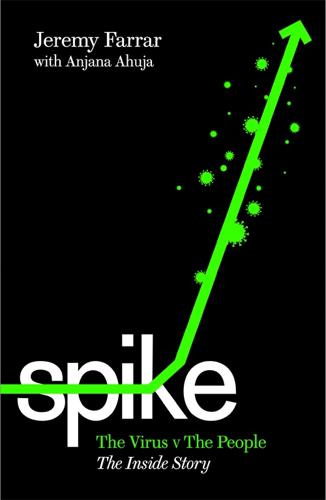
Spike: The Virus vs The People - The Inside Story
by
Jeremy Farrar
and
Anjana Ahuja
Published 15 Jan 2021
Kuiken Date: Saturday, 18 January 2020 at 16:08 To: Jeremy Farrar Subject: Wuhan coronavirus Dear Jeremy, Sorry to bother you on the weekend, but I have a dilemma about not disclosing info about the Wuhan coronavirus that I think should be made public. Do you mind to phone me about this at your earliest convenience at +31 ... Best wishes, Thijs. Thijs Kuiken, a veterinary pathologist by training who advises the Dutch government on the threat posed by zoonotic diseases (diseases that are transmitted between species, usually from animals to humans), is one of the unsung scientific heroes of the pandemic. He was sent a research paper on 16 January 2020 by the Lancet medical journal, to review for publication. This was one of the standout moments in the whole epidemic, the reddest in a constellation of red flags.
…
WHO World Health Organization WIV Wuhan Institute of Virology Zika The mosquito-borne Zika virus causes Zika virus disease, and is named after the Zika forest in Uganda, where it was first identified in monkeys in 1947. Infections were rare until 2007, with Brazil seeing a record outbreak in 2015. zoonotic: a zoonotic disease (or zoonosis) is one that crosses from one species to another. Dramatis personae Tedros Adhanom Ghebreyesus Director general of the World Health Organization (2017–), whose Emergency Committee declared the new coronavirus emerging in China to be a PHEIC (Public Health Emergency of International Concern) on 30 January 2020.
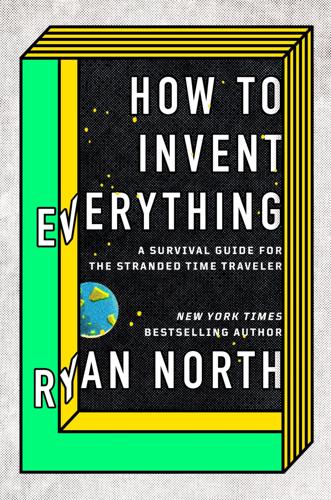
How to Invent Everything: A Survival Guide for the Stranded Time Traveler
by
Ryan North
Published 17 Sep 2018
Journal of Philosophy, Psychology, and Scientific Methods (The Science Press) XI: 589–600. Liggett, R. Winston, and H. Koffler. 1948 CE. “Corn Steep Liquor in Microbiology.” Bacteriological Reviews 297–311. “List of Zoonotic Diseases.” 2013 CE. Public Health England. March 21. https://www.gov.uk/government/publications/list-of-zoonotic-diseases/list-of-zoonotic-diseases. Livermore, Harold. 2004 CE. “Santa Helena, a Forgotten Portuguese Discovery.” Estudos em Homenagem a Louis Antonio de Oliveira Ramos, 623–31. Lundin, Cody. 2007 CE. When All Hell Breaks Loose: Stuff You Need to Survive When Disaster Strikes.

Against the Grain: A Deep History of the Earliest States
by
James C. Scott
Published 21 Aug 2017
One might argue that the spread of sedentism transformed Homo sapiens into far more of a herd animal than previously. Unprecedented concentrations of people, as in other herds, provided ideal conditions for epidemics and the sharing of parasites. But this aggregation was not a one-species herd but an aggregation of many mammalian herds who shared pathogens and generated entirely new zoonotic diseases by the mere fact of being assembled around the domus for the first time. Hence the term “late-Neolithic multispecies resettlement camp.” We were all, one might say, crowded onto the same ark, sharing its microenvironment, sharing our germs and parasites, breathing its air. No wonder then that the archaeological signs for a life lived largely in the domus are strikingly similar for man and beast.
…
To the degree that they were already “herd” or “flock” animals, they would have carried some species-specific pathogens of crowding. Assembled for the first time around the domus, in close and continuous contact, they quickly came to share a wide range of infective organisms. Estimates vary, but of the fourteen hundred known human pathogenic organisms, between eight hundred and nine hundred are zoonotic diseases, originating in nonhuman hosts. For most of these pathogens, Homo sapiens is a final “dead-end” host: humans do not transmit it further to another nonhuman host. The multispecies resettlement camp was, then, not only a historic assemblage of mammals in numbers and proximity never previously known, but it was also an assembly of all the bacteria, protozoa, helminthes, and viruses that fed on them.
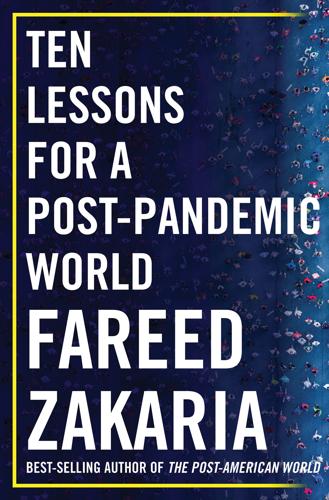
Ten Lessons for a Post-Pandemic World
by
Fareed Zakaria
Published 5 Oct 2020
Norton, 2012). 16“nature is declining globally”: United Nations, Sustainable Development Report: “Nature’s Dangerous Decline,” May 6, 2019, https://www.un.org/sustainabledevelopment/blog/2019/05/nature-decline-unprecedented-report/. 16“weapon of the weak”: James C. Scott, Weapons of the Weak: Everyday Forms of Peasant Resistance (New Haven, CT: Yale University Press, 1985). 17 three-quarters of new human diseases: Centers for Disease Control and Prevention, “Zoonotic Diseases,” https://www.cdc.gov/onehealth/basics/zoonotic-diseases.html. 17 at a faster pace: Jon Hilsenrath, “Global Viral Outbreaks Like Coronavirus, Once Rare, Will Become More Common,” Wall Street Journal, March 6, 2020. 17 “perfect cauldron”: Christian Walzer, “COVID-19: Where It Starts and Stops,” Wildlife Conservation Society, Wildlife Health Program, https://youtu.be/_D_6a56zI_U?
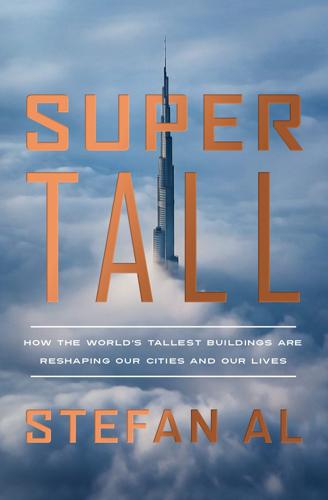
Supertall: How the World's Tallest Buildings Are Reshaping Our Cities and Our Lives
by
Stefan Al
Published 11 Apr 2022
However, while social connectivity is good for exchanging ideas and making financial transactions, it also speeds up more dubious activities and virus transmissions. When the pandemic and social distancing called into question dense urban life, skyscrapers took on a new meaning. While compact cities may have contributed to the rapid spread of the COVID-19 pandemic, its opposite, urban sprawl, may have been a cause. Zoonotic diseases, which spring from animals to humans, are a result of our increasing wildlife-human interface. They are partially a consequence of the destruction of nature through deforestation and unbridled suburbanization. If we can limit our human footprint by creating compact cities, we may be able to better protect our forests and wildlife.
…
See also cities agriculture and, 149, 246, 249, 270 biodiversity loss and, 262 China’s rise and, 101 dystopian image of, 239 economic growth and, 12–13, 239 enabled by train and elevator, 93 expected growth of, 13 exploded in nineteenth-century US, 181–82 urbanization (continued) heat island effect and, 257, 260 return from suburbs since 1980s, 146 skyscrapers and, 208 sustainable, 238 trees felled during, 246 zoonotic diseases and, 210 Uruk, 240–41 Van Alen, William, 186 Vancouver, energy limits, 136 vaults, 32, 56 Velázquez, Germán, 136 Velcro, 83 VIA 57 West, New York, 174, 175 views, 153, 157, 158–59, 168 Viñoly, Rafael, 164, 195, 204 Vitruvius, 26, 89–90, 151 volcanic ash, 26, 28, 55 vortex shedding, 69, 70 Wainwright, Oliver, 166, 202–3 Waldram, Percy, 158 Walkie-Talkie, 13, 164–65, 169, 260 waste, uses of, 264 water concrete and, 25, 26–27, 28, 33, 39 consumed by Burj Khalifa, 37 water systems green infrastructure and, 249–50 Roman viaducts and, 22, 55 of Singapore, 253, 254, 255, 258 wedding-cake style, 185–86, 189, 190, 199 West, Geoffrey, 209 Whyte, William H., 191 Willis, Carol, 185–86 Willis Tower, 65, 65–66, 67 Wilson, E.

Essential: How the Pandemic Transformed the Long Fight for Worker Justice
by
Jamie K. McCallum
Published 15 Nov 2022
Labor under capitalism puts our society, especially workers, unnecessarily in harm’s way. The big picture: unchecked capitalist development is responsible for introducing feral pathogens into human populations. The capitalist cocktail of ecological devastation and mass human migrations has given zoonotic disease a great leap forward. Urbanization and the destruction of tropical forests effectively eliminate the border between humans and the pathogens lurking inside wild animals. The subsequent decline of biodiversity combined with the erasure of those ecological borders presents new species as food sources.
…
The degree of worker power fluctuates across Europe, but on average it is far greater than in the US, meaning American meatpackers also perform faster work for less pay. The declines in worker safety are correlated with adverse health for consumers too. Many of the most infectious and deadly zoonotic diseases—those we get from contact with sick animals—have emerged only recently, alongside the rising corporate consolidation of the industry and the increasing complexity of the global meat supply chain. Avian flu H1N1, severe acute respiratory syndrome (SARS), West Nile virus, Nipah virus, and bovine spongiform encephalopathy (BSE) are all products of the last two decades.35 The strength of nursing home unions to make a positive impact on public health stands in stark contrast to the weakness of those in meat and poultry processing.
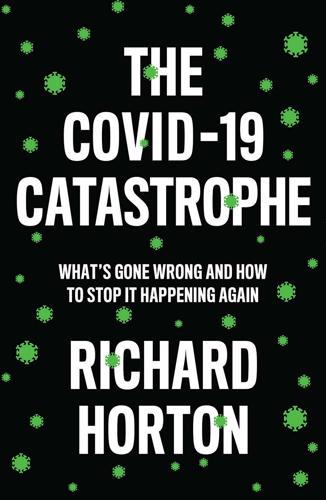
The COVID-19 Catastrophe: What's Gone Wrong and How to Stop It Happening Again
by
Richard Horton
Published 31 May 2020
SARS inaugurated a new era of post-Westphalian public health – public health that transcended national borders and national sovereignties. And that new era itself was inaugurated with an achievement of spectacular proportions: ‘the global campaign against SARS achieved a victory that will go down in the annals of public health and international relations history.’ Since SARS, there have been two further major outbreaks of zoonotic disease. One was Ebola in 2013. Countries and global agencies displayed disgraceful complacency in their lacklustre response to Ebola. A year earlier, another coronavirus – causing the Middle-East Respiratory Syndrome – hit Saudi Arabia and spread to Qatar and several other countries in the Arab world.

The Measure of Progress: Counting What Really Matters
by
Diane Coyle
Published 15 Apr 2025
The current System of National Accounts (SNA), including the all- important figure for GDP, dates from the 1940s when physical capital was the binding constraint on growth in the postwar era, natural resources seemed free, and the pressing economic policy challenge was seen as effective demand management so the Great Depression could never recur. Now, nature is the binding constraint. Extreme weather will destroy much physical and human capital, biodiversity loss will reduce agricultural productivity, and new zoonotic diseases seem likely I n t r o du c t i o n 5 to emerge as humans press harder upon natural habitats. And the main economic policy challenge is now on the supply side, restarting the economy’s productivity engine to drive improving living standards, at a time when t here are headwinds such as climate shocks, conflict, and ageing societies.
…
Awareness of the damage now being caused by climate change has grown, now that parts of the world that are reported in global media (the West Coast of the United States, eastern Australia) are visibly burning b ecause of drought and high winds. More and more of us are becoming aware of the threat to food supplies and human health caused by loss of biodiversity and h uman encroachment on habitats, thanks to crop failures or zoonotic diseases like Ebola and COVID-19. In the years and d ecades ahead, there will be reduced potential growth, higher prices, and more disasters like destructive wildfires, hurricanes, floods, and epidemics. In the rich countries the relative share of economic value that is non-material has been rising (as described in Chapter 1), but the world is increasing its demand on natural resources in absolute terms.
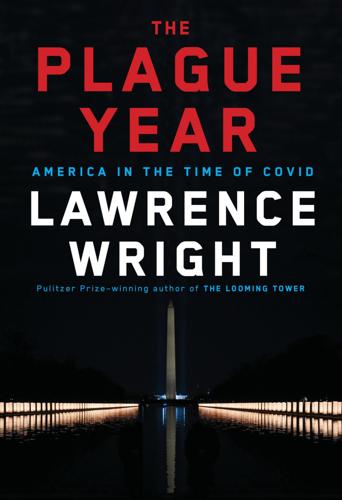
The Plague Year: America in the Time of Covid
by
Lawrence Wright
Published 7 Jun 2021
The Emergency Operations Center—a large, bright room, with serried rows of wooden desks facing a wall of video screens—exudes a mixture of urgency and professional calm. Brooks directed the Covid-19 task team with Greg Armstrong, a fellow epidemiologist. Armstrong oversaw the Office of Advanced Molecular Detection, a part of the CDC’s center for emerging and zoonotic diseases—those diseases that come from animals, as coronaviruses typically do. Humanity’s encroachment into formerly wild regions, coupled with climate change, has forced animals to migrate from traditional habitats. That has engendered a host of new diseases, including Ebola, Zika, West Nile, Nipah—just to mention a few that have arisen fairly recently.
…
in the distant past: “Middle East respiratory syndrome coronavirus (MERS-CoV),” World Health Organization, March 11, 2019. incidental victims: L.-F Wang and B. T. Easton, “Bats, Civets, and the Emergence of SARS,” in J. E. Childs, J. S. Mackenzie, and J. A. Richt, eds., Wildlife and Emerging Zoonotic Diseases, Berlin: Springer, 2007, p. 334. pangolin scales: “Pangolins: Hong Kong finds ‘record’ haul of scale in shipping container,” BBC News, Feb. 1, 2019. “These animals were sent”: Kangpeng Xiao, “Isolation and Characterization of 2019-mCoV-like Coronavirus from Malayan Pangolins,” bioRxiv preprint, Feb. 20, 2020.
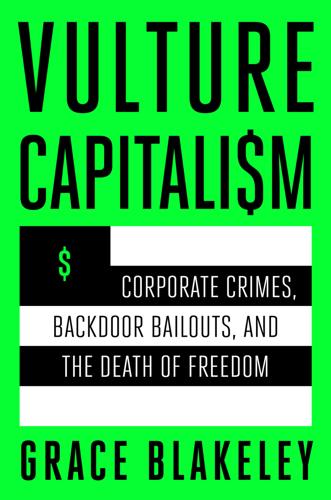
Vulture Capitalism: Corporate Crimes, Backdoor Bailouts, and the Death of Freedom
by
Grace Blakeley
Published 11 Mar 2024
We are currently living through the sixth mass-extinction event in the earth’s history, driven by everything from climatic changes to the overuse of chemical pesticides.162 We have disrupted the nitrogen cycle through the overuse of chemical fertilizers that have compromised the quality of our drinking water and the air we breathe, as well as accelerating climate breakdown and biodiversity loss.163 The overuse of antibiotics has led to the emergence of resistant strains of many potentially deadly bacteria, and the overuse of pesticides has resulted in pollinator decline that is putting at least $600 million in global crops at risk every year.164 Meanwhile, up to 40 percent of the earth’s land is now degraded, potentially compromising our ability to grow the foods we need to feed ourselves.165 Marx realized more than a century ago that the wealth provided by nature was treated by capital as a “free gift”—a store of wealth that could be drawn on, apparently indefinitely.166 The pandemic was a wake-up call for those who have grown used to exploiting the natural world without consequence. As the author and activist Mike Davis perspicaciously warned in 2005, zoonotic diseases have become far more common in the era of industrialized agriculture, and they spread more quickly due to globalization.167 Capital is now waking up to the fact that nature’s free gifts are close to running out—not simply the resources that we have extracted from the earth for generations, but the very environment we rely on to survive.
…
Madoff Investment Securities LLC, 120–21 Bevins, Vincent, 191 Bezos, Jeff, 75–77, 80–81, 132 Biden, Joe, 69, 70–71, 136, 140–42 Big Three asset managers, 133, 135, 137 biopolitics (Foucault), 105 BlackRock, 69, 132–37, 257 Blackstone Financial Management, 44, 133 “black swan” events, 50, 114 Blackwater, 104 Bodie, Matthew, 254 Boeing, 3–10, 86, 87, 96, 225 agreements with Southwest Airlines, 5, 10, 16 Boeing 737 MAX, 3–9, 17, 218–19 Boeing 787 Dreamliner, 4–5, 8 capitalism and, 16–17 corporate welfare and, 7–8, 29 MCAS (Maneuvering Characteristics Augmentation System), 4, 5–7 merger with McDonnell Douglas, 4, 8–9 shareholder distributions, 6 Bolsonaro, Jair, 251 BP, 64 Braithwaite, Michael, 163–64 Braun, Benjamin, 129–30 Braverman, Harry, 99–100 Brazil Amazon environmental protections, 251 Fordlândia in, 22–23, 186 Porto Alegre model for participatory budgeting (PB), 232–33, 247 Bregman, Rutger, 224 Bretton Woods, 51 British Business Bank (BBB), 156–57 Brook House (UK), 102 Brown, Matthew, 237–38, 247 Brown, Wendy, 33, 34, 143, 167 Buffett, Warren, 95 Builders Labourers Federation (BLF, Australia), 227–29 Bukharin, Nikolai, 182 bureaucratization, 34–35, 147 Burke, Edmund, 103 Bush, George W., 140 C Calhoun, David, 9 Cameron, David, 54, 154–56, 162 campaign finance reform, 259 Canada COVID-19 aid to corporations, 46, 136 Ethyl Corp. lawsuit and, 197 resistance to the labor movement, 78 Toronto Community Housing Corporation (THTC) participatory budgeting, 232–33 Canada Infrastructure Bank, 136 Capita, 164 Capital (Marx), vii capitalism, 11–17 alliances among capitalists in, 13–14 centralization of power in, xvi–xvii, 92, 136–37 central vs. corporate planning and, x–xiv, xvi, xix–xx, 14–16 class divisions in, x, xix, 11–14, 38–39, 82–84, 108, 151, 158–60, 216–18, 252, 259, 268 democracy and, xiv–xv, 147, see also democratic planning dialectic/creative tension between markets and planning, xvi–xvii, 37, 53, 123, 126 distinction between capital and labor, 30–39 feudalism vs., 12–13, 266, 269–71 foundations of, 264–66, 268–71 free markets and competition and, ix, 11–14, 15–17, 30, 36–39, 97–98, 137, 221, 268–70 fusion of political and economic power in, xviii, 10, 13–15, 33, 80, 82–84, 95–96, 104–8, 183–85, 190, 264–65 fusion of public and private power in, 142–43, 159–60 human capital and, 33, 148, 166–67 as hybrid system of competitive pressure and centralized control, ix, 16, 37, 47, 123, 269 imperialism as highest stage of, 183 international finance system as time lords of, 109, 113–14 investor-capitalists, 118, 148 Keynes and, see Keynes, John Maynard Marx and, see Marx, Karl means of production in, 12–13, 247, 264 “mini-capitalists” and, 33, 118, 122–23 nature of capital and, 11, 12–13 need for business firms in, 81–85 negative externalities, 88–89 new industrial capitalism (Galbraith), 37 pursuit of profit in, xiii–xiv, 25, 29 rewards for competitiveness, 225–26 as rule by capital vs. free markets, 10–11, 36–39, 137 socialism vs., 221 socialized capitalism (Galbraith), 97–98 social relationships in, 11, 13, 143, 157–59, 164, 170, 172, 265–66 stakeholder capitalism, 35–36, 135–36, 148 state vs. markets and, 220–22 surveillance capitalism, 27, 54–58, 94, 98–100, 155 see also disaster capitalism CARES Act (2020), 9–10 Cayman Islands, as tax haven, 42, 132 central banks, 124–32 bank bailouts in the United Kingdom and, 31–32 BlackRock and, 136 democratizing, 258 emergence of central banking, 124–25 legitimacy questions, 129–32 loanable funds model and, 114–18 quantitative easing (QE) and, 127–28, 129, 136 swap lines among, 209–10 US dollar and, 178, 209–10 see also specific central banks Central Intelligence Agency (CIA, US), 175, 189, 241 centralized planning by Amazon, 75–81 in capitalist economies, 14–16, 24, 66–71, 98, 143, 266 collective action problem and, 47–48, 67, 70, 159–61, 166–67, 248–49, 253 corporatism/corporate planning vs., x–xiv, 14–16, 27, 30, 84 democratic, see democratic planning empires and, see empire planning financial crisis of 2008 and, 49–50 at Ford Motor Company, 19–24 Galbraith on, 97–98 Gramsci on, 24 Hayek on, x–xii international finance system and, 113–14 neoliberal revolution vs., 24–26 resisting, 71–72 by states, see state planning by Walmart, 88, 264, 265 Chamayou, Grégoire, 27, 30 Chan, Jackie, 168 Chang, Ha-Joon, 146, 180, 182 Chao, Elaine, 42–43 ChemChina, 90, 91, 124 Chemring Group, 46 Chevron, 64, 194–96, 205 Chicago School, 150–51, 199 Chile democratic socialism in, 241–46 National Telecommunications Enterprise, 245 Project Cybersyn, 245–46, 247, 265, 266 State Development Corporation (CORFO), 244–45 violence of the neoliberal state in, 34 Chiluba, Frederick, 206 China Belt and Road Initiative, 171–72, 182–83 COVID-19 surveillance and, 57–58 developmentalism and, 137, 170–72 Evergrande Group implosion, 167–69, 171 state planning in, 167–72 China CITIC Bank International, 124 Chiquita (formerly United Fruit Company, UFC), 186–89 Christophers, Brett, 136 Chrysler, 29 Citigroup, 120, 124 Civil War, 144 climate breakdown, viii, 66–71 Amazon and, 79 decarbonization efforts, 67, 69–71, 78, 135, 140–41, 250–51, 256, 263 economic power of capital and, 15 Extinction Rebellion and Fridays for Future, 251 fossil-fuel sector and, 66, 69, 139–43 Global North and, 263 Global South and, 263 Green New Deal proposal, 69, 248 need for cooperation and, 66–71, 216, 247–52 Climate Leviathan (Wainwright and Mann), 70 Coase, Ronald, 81, 83–85 Coca-Cola, 81 Cold War, ix, xx collective action problems, 47–48, 66–71, 159–61, 166–67, 248–49, 253, see also democratic planning Collins Aerospace, 219 Colombia, surveillance of Teleperformance workers, 99 Communist Manifesto (Marx), 152 Communist Party of China, 171 of Guatemala, 188 of Indonesia, 191 community wealth building (CWB), 237–38 comparative advantage (Ricardo), 179–81 computer technology ARPANET, 244 coop app platforms, 154–55, 254–55 data protection and privacy, 27, 54–58, 94, 99, 155 in democratizing the future, 264–66 dot-com bubble (1997–2001), 110–11, 120, 133 intellectual property rights and, 262 Project Cybersyn (Chile) and, 245–46, 247, 265, 266 surveillance capitalism and, 27, 54–58, 94, 98–100, 155 Walmart centralized planning and, 88, 264, 265 Connolly, James, 59, 61 conspiracy theories, xvi, 38, 43–44, 53 Cooley, Mike, 216–20 Coons, Chris, 141 COP26 (UN Climate Change Conference, 2021), 70–71 Coral Island, The (Ballantyne), 222–24 Corbyn, Jeremy, 250 Cornered (Lynn), 21 corporations central vs. corporate planning, x–xiv corporate crime and, 106–7, 119–24, 156–57, 220–21 corporate sovereignty, xiv, 22–23, 25, 80, 103–8, 143 corporatism and, x–xiv, 14–16, 27, 30, 84 COVID-19 pandemic programs, 9–10, 41–49, 59–60, 141–42, 155–56 democratic planning and, see democratic planning expanding collective ownership of, 253–55, 257 fusion of political and economic power of, xviii, 10, 13–15, 33, 80, 82–84, 95–96, 104–8, 183–85, 190, 264–65 lobbying by, 105–6, 140, 141–42, 151, 159, 259 managerialism and, 34–35, 84, 100, 108, 216 profit maximization by, xiii–xiv, 25, 29 see also taxes and taxation COVID-19 pandemic airline industry and, 9 BlackRock and, 136 call center workers and, 98–99 CARES Act (2020) and, 9–10 corporate beneficiaries of, 9–10, 41–49, 59–60, 141–42, 155–56 cost-of-living crisis, 48, 58, 63–66, 129 Evergrande (China) implosion and, 167–69, 171 fossil-fuel industry and, 64, 141–42 frauds and scams in, 156–57 housing crisis and, 43, 44–45 inflation and, 63–66 McKinsey & Company and, 53–58, 155 mortality measures during, 105 shareholder distributions/share buybacks during, 45–47, 59–60, 64 shipping companies and, 62–63, 64 state economic programs in, 41–48 supply chain financing and, 153–54 surveillance programs, 57–58, 98–99 UK responses to, 45–46, 53–61, 155–57, 162–63 US responses to, 41–45 WeWork business model and, 112 worker loss of income and poverty, 60, 63, 98–99 zoonotic disease and, 68 creative destruction (Schumpeter), 86, 95, 96 Credit Suisse, 52, 123–24, 153–54 crony capitalism, 34 Crothers, Bill, 155–56 Crown Commercial Service (CCS, UK), 155–56 Crown Prosecution Service (CPS, UK), 102 Cunningham, Ceri, 239–40 Curaçao, as tax haven, 45 D Dalton, David, 155 Danone, 46 Dark Waters (2019 film), 91 data protection and privacy, 27, 54–58, 94, 99, 155 Davis, Mike, 68 Dawn of Everything, The (Wengrow and Graeber), 224–25 Dayen, David, 89 Debt (Graeber), 125 Debt Collective (US), 249–50 Decree 900 (Guatemala), 188 de Guzman, Leody, 177 Delinquent Genius (Cooley), 217 democracy capitalism and, xiv–xv, 147 democratizing the state, 257–61 planning and, see democratic planning as synonymous with socialism (Meiksins Wood), xviii “unfreedom” and, xiv–xv Democratic Party (US) fossil-fuel industry and, 140–41, 142 in Mississippi, 236 democratic planning, 215–66 Argentina, Ciudad Futura, 234–35, 255 Australia, green bans, 227–29 Brazil, participatory budgeting, 232–33, 247 in Chile, 241–46 for the future, 264–66 human nature and, 222–26 Iceland, Better Reykjavik program, 235–36, 258–59 India, Kerala people’s planning, 233–34 international finance system and, 255–57 international institutions and, 261–64 Mississippi, Cooperation Jackson program, 236–37, 247, 251–52, 255 participatory budgeting (PB), 232–33, 235–36, 258–59 people-powered planning, 226–40, 247–52 Spain, Marinaleda workers’ collective, 229–30 state-level, 241–46, 257–61 UK, Blaenau Ffestiniog program (Wales), 238–40 UK, Greater London Enterprise Board, 216–17, 219–20 UK, Lucas Plan/Lucas Aerospace Corporation, xix, 215–22, 226, 229, 231, 247, 248, 266 UK, People’s Plan for the Royal Docks (London), 230–31 UK, Preston community wealth building (CWB) program, 237–38, 247, 255 for work and the corporation, 252–55 democratic socialism, 216–17, 241–48, 265 Democratic Socialists of America (DSA), 250 dependency theory, 184–86, 199, 205 deregulation, xv–xvi, 7, 31, 32, 51, 170, 206 Deutsche Bank, 49 developmentalism, 137, 170–72, 205–8 disaster capitalism, 41–71 climate breakdown and, 66–71 collective action problems and, 47–48, 67, 70, 159–61, 248–49, 253 corporate welfare programs and, 31–32 COVID-19 pandemic and, see COVID-19 pandemic financial crisis of 1987 and, 126–27 financial crisis of 1997 and, 51, 200 financial crisis of 2008 and, see financial crisis of 2008 (subprime bubble) nature of, 38 shock doctrine (N.

The Pandemic Century: One Hundred Years of Panic, Hysteria, and Hubris
by
Mark Honigsbaum
Published 8 Apr 2019
The second is that humans, either through their changing social and cultural behaviors, or through their impact on the environment and animal and insect ecologies, exert powerful evolutionary pressures on microparasites. Sometimes, these pressures select for a particularly virulent strain of the parasite. At other times, they present the parasite with an opportunity to colonize a new host and extend its ecologic range. This is a particular risk in the case of zoonotic diseases bridged by rodent and insect vectors, such as plague, yellow fever, and dengue. However, it was realized that in an era of increasing globalization, it was also true of other zoonoses that were not nearly as mobile. In particular, it was argued, AIDS would not have been able to escape Africa had humans not changed the rules of “viral traffic.”
…
Percy Q., 117–18 Wolbach, Burt, 35 Wolbachia bacteria, 351 Womey, Guinea, 291 World Bank, cash fund for resource-poor countries, 366 World Health Organization (WHO), 4n, 11, 165, 177, 221, 232, 247, 250, 253, 342, 366–67 adds “Disease X” to list of potential pandemic threats, 365–66 Africa office, 336 Africa Regional Office (AFRO), 284 Communicable Diseases Division, 257, 336 complacency of, 365 decision instrument of, 334–35 declares Ebola a pheic, 303–5 dengue and, 322 Division of Emerging and Other Communicable Diseases, 290 Ebola and, 283–84, 293, 296–97, 299, 301–2, 303–5, 307–9, 311–12, 335–36, 365, 414n Ebola Interim Assessment Panel, 312 fear propagated by alerts, 274 Global Influenza Program, 244 Global Outbreak Alert and Response Network (GOARN), 257, 274, 284 Global Program on AIDS, 222 global travel alert for SARS, 250, 251, 265, 266, 274 influenza vaccination program, 247 International Health Regulations, 312 mass immunization campaigns of, 226 Mexican swine flu and, 368 SARS and, 257, 259–61, 273–75, 283 Zika and, 334–38 Zika emergency committee, 336–38 World War I, 7, 15, 17–19, 23–26, 28–29, 47, 61–62 Worobey, Michael, 224, 232–33 Writebol, Nancy, 300, 302, 303 Wu Lien-Teh, 77–79 X. cheopis, 385n Yale University, 6 Yambuku, Zaire, 223, 286, 289, 290, 305, 313, 314 Yap islanders, 326–27, 327n yellow fever, 41–42, 143, 280, 282, 320–21, 325, 335, 340, 347, 359, 362 Yemen, cholera in, 342 Yeoh Eng-kiong, 253 Yersin, Alexandre, 68 Yersinia pestis, 68, 72, 73, 78–79, 80, 82, 99, 150 Yi Guan, 246–47, 248, 270, 273 York Central Hospital, 263 Young, George, 83 Young, James, 264 Zabolotny, Danilo, 384n Zaire, 221, 221–22 AIDS in, 232 Ebola in, 282–83, 286, 289, 314, 315, 364 Zaire ebolavirus, 281, 286, 287, 289–90, 315, 410n Zika, 3, 12, 361 aborted births and, 344 classified as flavivirus, 325–26 climate and, 346–47 conspiracy theories and, 345–46 contraception and, 356–57 control measures for, 340–41, 351–52 dengue and, 330–31, 347–48 diagnostic tests for, 328 environmental causes and factors, 346–47 GBS and, 327–31, 338, 341, 343 immunity to, 326n, 327n lack of data about, 346 lack of diagnostic tests for, 332–33 lack of knowledge about, 324–25, 337, 348 latency and slow onset of, 363 neglect of, 343, 356–57 no longer considered pheic, 341 other arboviruses and, 347–48 panic about, 338–41 as pheic, 337–38, 361 phylogenetic analysis of, 342–43 rare reporting of, 326 rise through microbial threat rankings, 335–38 rumors about, 327, 332, 344, 345–46 sexual transmission of, 339, 343 similarities to other arboviruses, 326 social and environmental conditions and, 337, 342–43, 346–47, 356 strains of, 342–43 symptoms of, 318–19, 326 transmission of, 337, 342–43, 349–51 as Trojan horse, 347 unanswered questions about, 342–43 vaccines against, 341 vector-control strategies for, 351 Zika forest, 325 ZMapp, 299, 300, 315 zoes, 288 zoology, 7 zoonotic diseases, 12–13, 68. See also animals, as disease vectors; specific diseases; specific viruses Zuckerberg, Mark, 366 ALSO BY MARK HONIGSBAUM A History of the Great Influenza Pandemics: Death, Panic and Hysteria, 1830–1920 Living with Enza: The Forgotten Story of Britain and the Great Flu Pandemic of 1918 The Fever Trail: In Search of the Cure for Malaria Valverde’s Gold: In Search of the Last Great Inca Treasure Copyright © 2019 by Mark Honigsbaum All rights reserved First Edition For information about permission to reproduce selections from this book, write to Permissions, W.
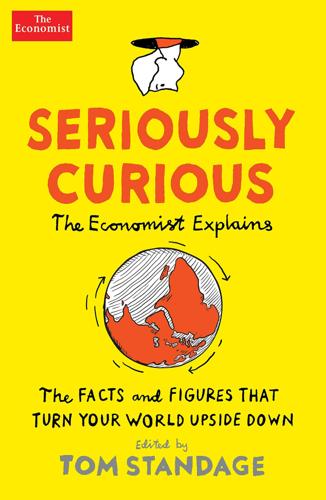
Seriously Curious: The Facts and Figures That Turn Our World Upside Down
by
Tom Standage
Published 27 Nov 2018
In June 2017 health authorities in New Mexico, in the south-western United States, announced that three people had been diagnosed with the disease in the previous month alone. This is a marked uptick for a country that records around seven cases a year nationwide, according to the US Centres for Disease Control and Prevention. The plague Source: WHO Zoonotic diseases such as the plague, Ebola and avian flu – which are generally carried by animals – are extremely hard to eradicate. The plague is caused by a bacterium, Yersinia pestis, which infects fleas, which in turn live mainly on rodents. In Europe, those fleas lived mostly on black rats. In America’s south-west, the site of most cases observed in the rich world, the fleas have shifted to rural squirrels and prairie dogs.

The Climate Book: The Facts and the Solutions
by
Greta Thunberg
Published 14 Feb 2023
Instead, it was a pandemic that appeared and changed our lives overnight. In the winter of 2022, when we were finishing this book, it was not possible to say for sure that Covid-19 had been transmitted to humans from other animals, in this case bats. There are still uncertainties. What we do know, however, is that most pandemics do come from animals; they are zoonotic diseases. In fact, 75 per cent of all new infectious diseases originate from wildlife. Natural habitats should work as a protecting shield, but once you strip back too much of that natural barrier we are exposed to increasing levels of risk. So maybe the coronavirus did spread from animals to humans, or maybe it did not.
…
See individual name and type of event weathering, enhanced, 237 well to wheel emissions, 268 West African Monsoon Shift 38 West Antarctic Ice Sheet 38, 39 wetlands, 96, 236, 245, 253, 346, 416 wheat, 149, 250, 254, 342, 343 white supremacy, 162, 163, 391, 400 wildfires, 50, 51, 62, 96–8, 102–5, 104, 130–31, 133, 193, 218, 314, 378–9, 415, 432 Wilkes Basin East Antarctica 38 willow ptarmigan, 114 willow warbler, 113 wind patterns, 58, 81–2 wind power, 28, 174, 220, 222, 224–5, 225, 226, 227, 228, 268, 270, 280, 297, 343–6, 376, 388, 431; offshore, 220, 228, 343–4, 345, 346 wolves, 9, 103, 174, 349, 350 women, climate crisis and, 172, 176, 177, 309, 398–9, 402–4 wood fuel burning, 4, 92, 100, 102, 121, 156, 216, 224, 225, 226, 229, 233 woolly rhinoceroses, 9 World Bank, 167, 306, 376; Groundswell Report Part II, 187 World Economic Forum, Davos, 378 World Health Organization (WHO), 134, 135; Health Emergency Programme, 133; Special Report on Climate Change and Health, 136 Wounded Knee, US, 387 Y Yellow fever, 143 Yucatàn Peninsula, 417 Z Zika virus, 143, 145 zinc, 149, 150, 151 zombie fires, 379 zoonotic disease, 133 A B C D E F G H I J K L M N O P Q R S T U V W X Y Z Illustration Credits 1: ‘Global Average Temperature 1850–2020’ adapted for 2017–21 from ‘Changes over time of the global sea surface temperature as well as air temperature over land’ by Robert Rohde, Berkeley Earth Surface Temperature project, http://berkeleyearth.org/global-temperature-report-for-2020.
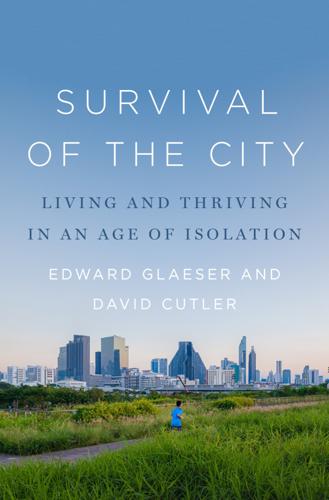
The Survival of the City: Human Flourishing in an Age of Isolation
by
Edward Glaeser
and
David Cutler
Published 14 Sep 2021
One recent study’s findings “suggest that global changes in the mode and intensity of land use are creating expanding hazardous interfaces between people, livestock and wildlife reservoirs of zoonotic disease.” A 2020 workshop on biodiversity and pandemics concludes that “conservation of protected areas, and measures that reduce unsustainable exploitation of high biodiversity regions will reduce the wildlife-livestock-human contact interface and help prevent the spillover of novel pathogens.” The risks of zoonotic disease strengthen the case for living in compact urban spaces that do not encroach on the habitats of the wild. There have been fledgling attempts to put together lists of unsafe practices, and this should continue.
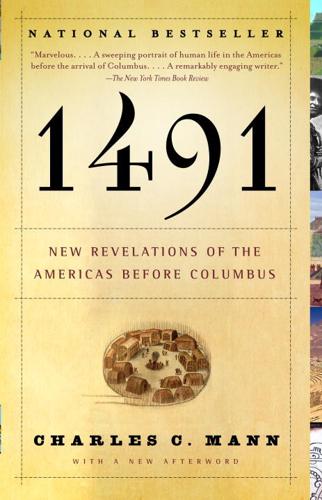
1491
by
Charles C. Mann
Published 8 Aug 2005
In some ways this is not surprising: the New World had fewer animal candidates for taming than the Old. Moreover, few Indians carry the gene that permits adults to digest lactose, a form of sugar abundant in milk. Non-milk drinkers, one imagines, would be less likely to work at domesticating milk-giving animals. But this is guesswork. The fact is that what scientists call zoonotic disease was little known in the Americas. By contrast, swine, mainstays of European agriculture, transmit anthrax, brucellosis, leptospirosis, trichinosis, and tuberculosis. Pigs breed exuberantly and can pass diseases to deer and turkeys, which then can infect people. Only a few of De Soto’s pigs would have had to wander off to contaminate the forest.
…
Before the Pleistocene, the Americas had three species of horse and at least two camels that might have been ridden; other mammals could have been domesticated for meat and milk. Had they survived, the consequences would have been huge. Not only would domesticated animals have changed Indian societies, they might have created new zoonotic diseases. Absent the extinctions, the encounter between Europe and the Americas might have been equally deadly for both sides—a world in which both hemispheres experienced catastrophic depopulation. PALEO-INDIAN MIGRATION ROUTES North America, 10,000 B.C. Researchers had previously noted the temporal coincidence between the paleo-Indians’ arrival and the mass extinction, but they didn’t believe that small bands of hunters could wreak such ecological havoc.
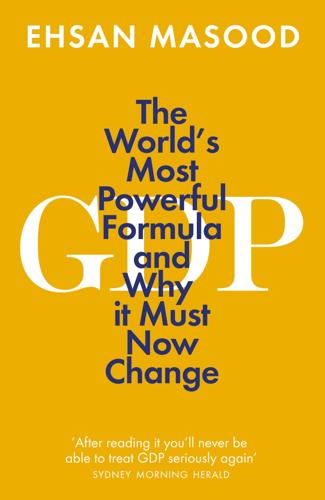
GDP: The World’s Most Powerful Formula and Why It Must Now Change
by
Ehsan Masood
Published 4 Mar 2021
The industrialization of the past few centuries has pumped enough carbon dioxide into the atmosphere to put the world on track to dangerous global warming. At the same time, a sixth mass extinction3 is becoming more likely as humans continue to encroach into nature to build more homes, new railways, and entire new cities—simultaneously increasing the risks of zoonotic diseases such as COVID-19.4 All of this means that economic recovery needs to be greener if climate change, biodiversity loss and future pandemics are to be avoided. But the problem with measuring economic activity using GDP is that it rewards traditional, fossil fuel-powered economic development. In contrast, greener development takes longer and cannot be achieved in the time it takes for governments to sanction what are called ‘shovel-ready’ projects that can deliver faster growth.
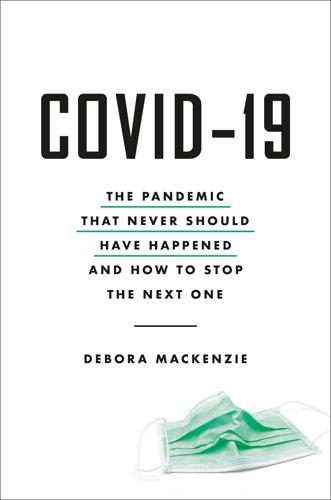
Covid-19: The Pandemic That Never Should Have Happened and How to Stop the Next One
by
Debora MacKenzie
Published 13 Jul 2020
In 2005… as a threat: Mark Henderson, “End of Sars as a deadly threat,” Times of London, February 21, 2009, www.thetimes.co.uk/article/end-of-sars-as-a-deadly-threat-nz3ll7tqzsz. 13. But, said virologists… humans were: L. F. Wang and B. T. Eaton, “Bats, Civets and the Emergence of SARS,” Current Topics in Microbiology and Immunology Wildlife and Emerging Zoonotic Diseases: The Biology, Circumstances and Consequences of Cross-Species Transmission, (2007): 325–44), doi.org/10.1007/978-3-540-70962-6_13. 14. Also, that year… markets: Zhang Feng, “Does SARS virus still exist in the wild?” China Daily, February 23, 2005, www.chinadaily.com.cn/english/doc/2005-02/23/content_418481.htm. 15.
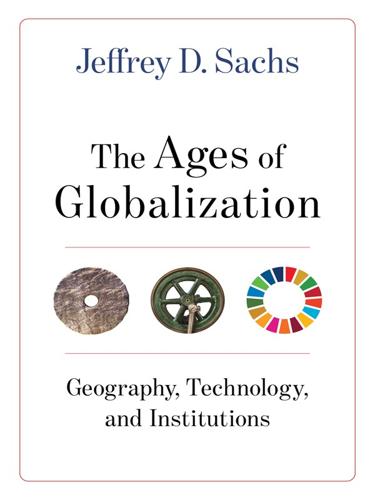
The Ages of Globalization
by
Jeffrey D. Sachs
Published 2 Jun 2020
This delayed the response of many governments, but civil society groups, led first and foremost by people infected with HIV, demanded action and step by step moved the world’s governments, although after costly delays. Impressively, the scientific community sprang quickly into action, making rapid and fundamental discoveries about the nature of the virus, the causes of disease, and the ways to fight both. Within roughly a decade of the identification of HIV as a new zoonotic disease, scientists discovered a number of antiviral medicines that could turn the HIV infection from a nearly certain deadly ailment to a chronic and controlled infection. In these breakthroughs and the subsequent distribution of the new medicines, globalization played a huge role. The science of discovery was global, with new scientific knowledge moving rapidly across all continents.

A Crack in Creation: Gene Editing and the Unthinkable Power to Control Evolution
by
Jennifer A. Doudna
and
Samuel H. Sternberg
Published 15 Mar 2017
Hammond et al., “A CRISPR-Cas9 Gene Drive System Targeting Female Reproduction in the Malaria Mosquito Vector Anopheles gambiae,” Nature Biotechnology 34 (2016): 78–83. eliminated certain agricultural pests through North and Central America: L. Alphey et al., “Sterile-Insect Methods for Control of Mosquito-Borne Diseases: An Analysis,”Vector Borne and Zoonotic Diseases 10 (2010): 295–311. field trials have already commenced in Malaysia, Brazil, and Panama: L. Alvarez, “A Mosquito Solution (More Mosquitoes) Raises Heat in Florida Keys,” New York Times, February 19, 2015. it would have spread genes encoding CRISPR, along with the yellow-body trait: “Gene Intelligence,” Nature 531 (2016): 140.

How to Spend a Trillion Dollars
by
Rowan Hooper
Published 15 Jan 2020
Effectively they left a blank space which ‘represents the need to prepare for an unknown pathogen that could cause a serious epidemic’ – a blank space duly filled the following year by SARS-CoV-2, which (almost certainly) crossed from bats and started spreading between humans. Actually it was quite predictable that a serious disease would cross over from animals. Other examples include HIV, rabies, anthrax, Ebola, flu, MERS and SARS (both from the coronavirus family) and bubonic plague. All of these are zoonotic diseases that jumped from animals. A lesser-known zoonotic virus, Nipah, is of serious concern. It crossed from fruit bats to pigs to humans and was first picked up in the Malaysian village of Nipah in 1999. It has a shocking death rate of between 40 and 75 per cent (compared to a 3 per cent case rate for coronavirus).
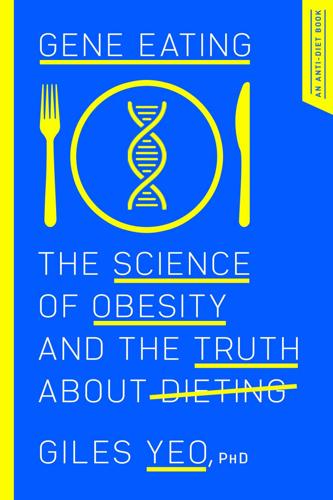
Gene Eating: The Science of Obesity and the Truth About Dieting
by
Giles Yeo
Published 3 Jun 2019
The rapid increase in population density enabled by farming also resulted in a huge increase in infectious disease.10 Diseases like measles, which, in the past, would have occurred in isolated nomadic pockets and then fizzled out, now had whole villages and towns of warm bodies, coughing, sneezing and spewing all manner of fluids, to aid their propagation. In addition, domestication brought large numbers of animals into close proximity with humans for the first time, allowing so-called ‘zoonotic’ diseases to jump between animals and humans. (These include common diseases such as the flu and chicken pox, to ones that cause more alarm like HIV and Ebola.) Yet the advantages of agriculture to the growth and proliferation of our species were just too great, and so humans, flexible as we are, eventually adapted.
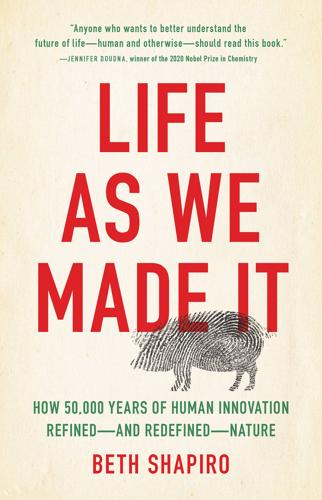
Life as We Made It: How 50,000 Years of Human Innovation Refined--And Redefined--Nature
by
Beth Shapiro
Published 15 Dec 2021
When SARS-CoV-2 emerged in China sometime during late 2019, we were not prepared, although we probably should have been. It’s not as if a pandemic was unexpected. As the number of humans on the planet grows, so does our proximity to one another and to other animals, and so will the chance that new zoonotic diseases (diseases that evolve in an animal host and then jump into humans) emerge. When the pandemic began, however, the scientific community turned its focus toward finding a way to stop SARS-CoV-2. In only a few months, scientists learned enormously more than was known before about how the human immune system responds to infection by SARS and other viruses.
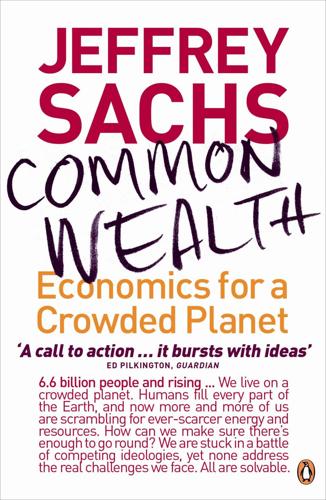
Common Wealth: Economics for a Crowded Planet
by
Jeffrey Sachs
Published 1 Jan 2008
Therefore, throughout history, when societies achieved breakthroughs in farming that enabled the growth of an urban population, the initial spread of urbanization was often set back by bouts of infectious diseases. Third, shifting patterns of human settlements bring societies into new contacts with animal species that harbor infectious diseases that can then mutate and jump to human populations. The result can be a zoonotic disease, meaning an infectious disease transferred from an animal population to the human population. The AIDS epidemic is such a zoonosis. Careful genetic reconstruction of the history of AIDS suggests that the human immunodeficiency virus (HIV), which causes AIDS, is a mutation of a simian immunodeficiency virus (SIV) carried by chimpanzees.
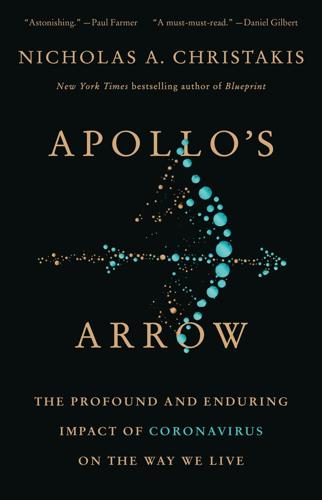
Apollo's Arrow: The Profound and Enduring Impact of Coronavirus on the Way We Live
by
Nicholas A. Christakis
Published 27 Oct 2020
But most persuasively, detailed genetic analyses of the pathogen show a pattern of descent from prior bat coronaviruses and of randomly occurring genetic mutations that are not compatible with deliberate genetic engineering.72 However, it is very difficult to totally exclude the possibility of an accidental release of a naturally occurring pathogen that was collected from bats and then taken to the lab for study. But since we know of many examples of zoonotic diseases leaping to humans in the normal course of events, including SARS-1, the balance of probabilities, at least to me and most experts, still leans heavily toward a chance move of a naturally occurring pathogen. Another early dubious theory was that the virus was somehow spread by 5G cell phone towers.
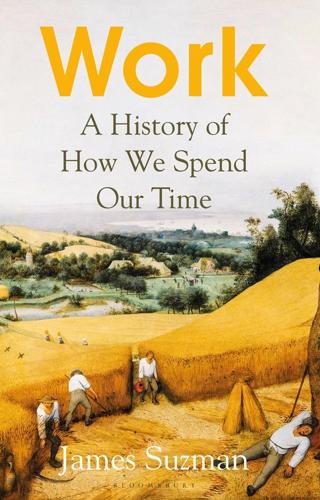
Work: A History of How We Spend Our Time
by
James Suzman
Published 2 Sep 2020
Foragers like the Ju/’hoansi remind us that we are as capable of ordering ourselves into fiercely egalitarian societies as we are of ordering ourselves into rigid hierarchies. As a result, many historians have argued that even if inequality is not a brute fact of human nature, then along with zoonotic diseases, despotism and war, it was probably a direct and immediate consequence of our embrace of agriculture. They reason that as soon as people had big surpluses to hoard, exchange or distribute, the more miserable angels of our nature took over. But extreme inequality was not an immediate and organic consequence of our ancestors’ transition to farming.

Failures of State: The Inside Story of Britain's Battle With Coronavirus
by
Jonathan Calvert
and
George Arbuthnott
Published 18 Mar 2021
Shi and her team at the Wuhan Institute have never explained what happened to the novel coronavirus RaBtCoV/4991 over the years it was stored in the laboratory, but some of the gaps have been filled in by a British scientist who is one of their close collaborators. Manchester-born Peter Daszak had been working alongside Shi’s team hunting down viruses in Chinese caves for 15 years as part of his role as president of the New York-based wildlife and conservation charity EcoHealth Alliance. He had first become interested in zoonotic diseases – those that jump from animals to humans – when he studied parasites during his zoology degree at the University of North Wales. Ever since the Sars outbreak of 2002–03 he has been visiting China several times a year to research coronaviruses, and he is a fierce defender of the Wuhan Institute, dismissing all suggestions that Covid-19 could have leaked from a laboratory.

Uncontrolled Spread: Why COVID-19 Crushed Us and How We Can Defeat the Next Pandemic
by
Scott Gottlieb
Published 20 Sep 2021
The PREDICT program spent more than $200 million to train about five thousand scientists dispersed across the world, with many working in regions where new infections were most likely to emerge, including Africa and parts of Asia. The effort aimed to join the researchers together in a global hunt for new zoonotic diseases.104 It helped build new capacities for monitoring threats in resource constrained nations. Like a lot of our pandemic planning, the creation of this program was triggered by fears surrounding the emergence of the H5N1 bird flu in 2005.105 Over its first ten years, PREDICT funded about sixty labs that became part of an ambitious global alliance to find viruses in animals that had the potential to leap into humans.

Aftershocks: Pandemic Politics and the End of the Old International Order
by
Colin Kahl
and
Thomas Wright
Published 23 Aug 2021
It was no surprise, therefore, when French president Macron continued to emphasize the importance of Europe moving toward greater “strategic autonomy” even after Biden won the U.S. election.21 PREPARING FOR THE NEXT PANDEMIC Each year, between two and five new zoonotic viruses are discovered that have jumped from animals to humans.22 As the world grows more urban, as deforestation further displaces animals from their natural habitat, and with meat very much a part of global supply chains, the chances of another major pandemic will only accelerate.23 In the years ahead, shifting climatic zones will also force animals out of their habitats and into greater contact with people (thus increasing the risk of zoonotic diseases) and expand the range of mosquitoes and other sources of vector-borne infectious diseases. Meanwhile, regardless of what the true origin of SARS-CoV-2 and the ensuing COVID-19 pandemic was (and our view is that there is simply not enough evidence as of this writing to conclude one way or the other), the risk of future lab accidents is real and must also be addressed.
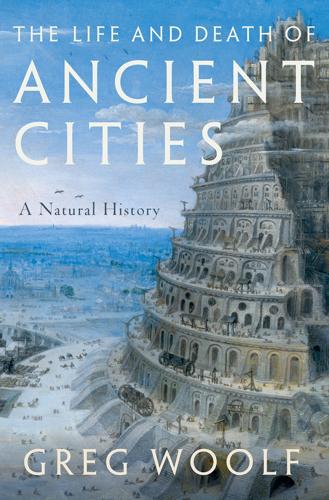
The Life and Death of Ancient Cities: A Natural History
by
Greg Woolf
Published 14 May 2020
A closer connection with former prey species brought some unexpected passengers, not all of them benign. Measles is so closely related to the cattle disease Rinderpest that it almost certainly developed in the context of cattle domestication. Many of the diseases that still affect us today are zoonotic, diseases that pass from one species to another. Salmonella and flu pass from domesticated fowl to humans. Some other diseases probably come from undomesticated animals. The most likely origin of HIV is in a similar condition endemic to some populations of African monkeys. And many human and animal pathogens are new, results of random mutations that gave them an evolutionary advantage at our expense.

Behave: The Biology of Humans at Our Best and Worst
by
Robert M. Sapolsky
Published 1 May 2017
I won’t pull any punches—I think that its invention was one of the all-time human blunders, up there with, say, the New Coke debacle and the Edsel. Agriculture makes people dependent on a few domesticated crops and animals instead of hundreds of wild food sources, creating vulnerability to droughts and blights and zoonotic diseases. Agriculture makes for sedentary living, leading humans to do something that no primate with a concern for hygiene and public health would ever do, namely living in close proximity to their feces. Agriculture makes for surplus and thus almost inevitably the unequal distribution of surplus, generating socioeconomic status differences that dwarf anything that other primates cook up with their hierarchies.